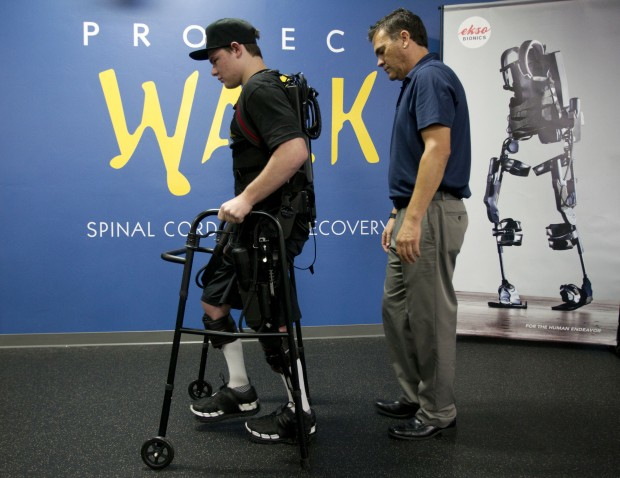About Joey's Recovery
Spinal Cord Injuries can happen to anyone, any day, at any time. A freak accident left Joey paralyzed from the waist down in 2009, but with intense, exercised-based therapy beginning the day after being released from the hospital, Joey has regained feeling and function below his level of injury and continues to fight off the long-time effects of sitting in a wheelchair. Weight-bearing exercises, gait training, strengthening and stretching have been a consistent part of Joey's routine since his injury in 2009, and must continue to maintain the progress he's made, to stay strong, healthy and ready for whatever science and technology may bring in the future.
Activity-Based recovery programs (abrp)
Joey has always been a very physically active and athletic kid. He was fortunate to be healthy and strong enough within 3 months of his injury to start working out at Project Walk in Carlsbad, starting in June of 2009. This facility began as the world-leader in exercise rehab for spinal cord injuries--and just 20 minutes down the road from our home! With the help of so many friends, supporters, and donors, Joey has been able to benefit from this (non-insurance covererd) rehab at least 2-3 days a week since his injury at places like Project Walk, VIP Neurorehabilitation Center, and with trainers at home.
strength training & Athletics
ABRPs work below his level of injury, but strengthening his upper body, is equally important since his ability to transfer in and out of a wheelchair and push himself everywhere he goes takes a lot of strength, and potential shoulder injuries could greatly affect his mobility. Stretching is needed on a consistent basis to keep muscles from tightening and shortening.
technological advances
Joey was asked to help demonstrate the Exoskeleton, from Exso Bionics and help raise money at Project Walk to purchase one for their facility. He demonstrated this technology by walking on the field at Petco Park in 2014. He has also tested another exoskeleton called the ReWalk at VIP NeuroRehabilitation. These technologies continue to advance, and we're hopeful that cheaper and lighter versions will continue to do more and more for people with paralysis.



